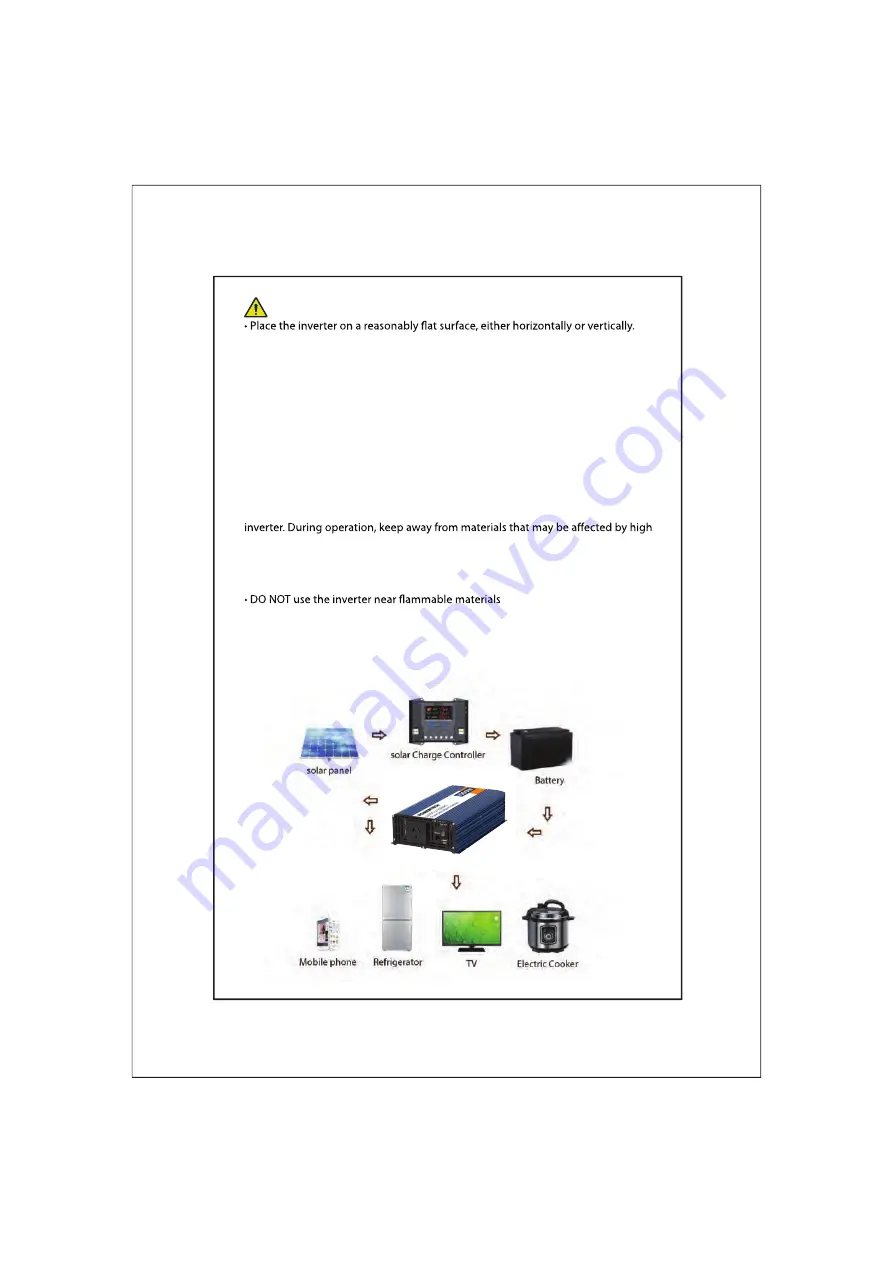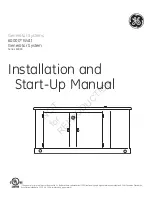
General Safety Precautions and Installation Tips:
• The inverter should not be installed in the enginer compartment, due to possible
water/oil/acid contamination, and excessive heat under the bonnet, as well as
potential danger from petrol fumes and the spark that an inverter can occassionally
produce. It’s best to run battery cables to a dry, cool mounting location.
• Keep the inverter dry. Do not expose it to rain or moisture. DO NOT operate the
inverter if the inverter, the device being operated, or any other surfaces that may
come in contact with any power source are wet. Water and many other liquids can
conduct electricity which may lead to serious injury or death.
• Do not operate the inverter in dusty environments. Keep the fan clean and free of
dust.
• Avoid placing the inverter on or near heating vents, radiators or other sources of
heat. Do not place the inverter in direct sunlight. Ideal operating temperature is
between 10°C and 30°C. Allow at least 2 inches (5cm) of air space on all sides of the
temperatures.
• In order to properly disperse heat generated while the inverter is in operation,
keep it well ventilated. While in use, maintain several inches of clearance around the
top and sides of the inverter.
• DO NOT install inverters in unvented battery compartments
• DO NOT expose the inverter to temperatures exceeding 40°C
• DO NOT connect live AC power to the inverter’s AC outlets. The inverter will be
damaged even if it is switched OFF.
CAUTION: Any internal adjustment on the inverter is prohibited. Do not
disassemble.
Summary of Contents for MI5736
Page 1: ...MI5 6 User Manual 12VDC to 240VAC ...
Page 7: ......

























